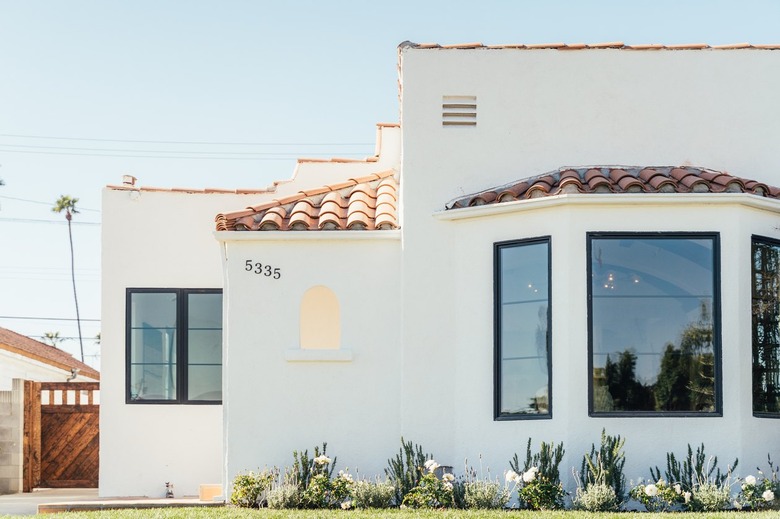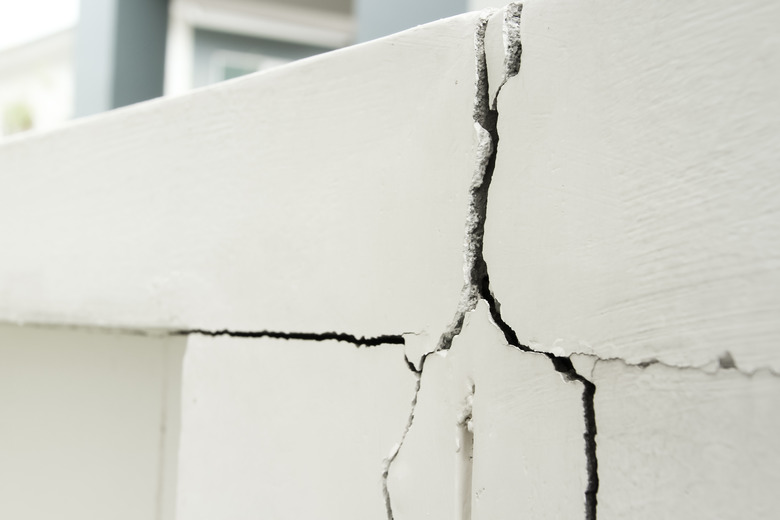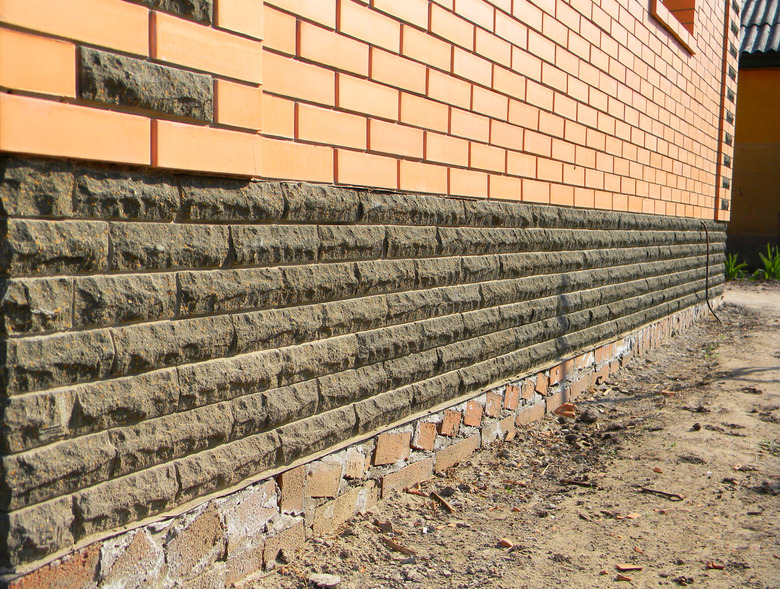How Much Does Foundation Repair Cost? (And How To Hire For The Job)
Homeowners can ignore some problems that develop with aging homes, but foundation problems aren't among them. Every house needs a stable foundation, and when foundation issues occur, they threaten other parts of the structure, including the floors, walls, ceilings, and potentially even the roof.
A failing foundation has a negative effect on a home's resale value, so fixing it is always a good financial investment. Apart from that, keeping your foundation in a good state of repair helps keep the entire house safe, stable, and livable and ensures it won't crumble to the ground during a heavy rain or fall over a cliff during a windstorm.
Need foundation repair for your home? Here's what you can expect to spend — and tips on how to hire for the job.
Tip
The national average cost for repair of foundation problems is around $5,000, but the actual cost is highly variable and depends on several factors, including the size of the building, the type of foundation, and the nature of the problem.
Signs of Foundation Damage
Signs of Foundation Damage
Cracks that appear in foundation walls are the most obvious sign of foundation damage, and unless these foundation cracks are spreading horizontally, they often aren't serious. Much of a home's foundation is hidden, however, and the signs of damage are less obvious. They include:
- Cracks in house walls and ceilings, especially those that run diagonally across the surface. Vertical and horizontal cracks may signify something less serious, such as expansion of the framing or failure of the drywall seams.
- Sloping floors, which usually point to deterioration of part of the foundation or soil settling, which could be caused by poor drainage and erosion.
- Sticking doors and windows. When the foundation settles, window and door frames may go out of square.
- Cabinets separating from the walls.
- Excessive moisture in the basement and ground floor. This is often caused by a foundation leak and can lead to deterioration of the framing as well as mold issues.
- Roof leaks. When the foundation sags, it puts stress on the roof framing and may cause it to shift.
How Each Type of Foundation Can Fail
How Each Type of Foundation Can Fail
A foundation is only as good as the ground on which it sits, and many foundation issues are caused by erosion, poor drainage, and shifting soil. Apart from that, structural components of the foundation can be compromised by moisture, which can rot wooden posts and beams or cause warping. Depending on the type of foundation supporting your house, different foundation problems can occur:
- Concrete slab: When the soil shifts or tree roots grow under a concrete slab, it can heave, buckle, and break. Before things get to this point, the damage is often noticeable as cracks across the slab, and if the floor is tiled, the tiles may shift, and the grout may crack. Concrete is porous, so when groundwater is high, hydrostatic pressure can force water through the pores and can also cause heaving, cracking, and shifting.
- Concrete block, brick, and concrete foundation: When the soil shifts either because of erosion or adverse soil conditions. cracks may form on foundation footings or walls, and when cracks spread diagonally or horizontally along the foundation walls or they follow the mortar lines in a step pattern, they indicate a serious problem that needs to be addressed immediately.
- Basement foundation: Basement walls experience a wider range of problems than most other foundations and are vulnerable to both soil shifting and hydrostatic pressure from groundwater. Both foundation cracks and bowing walls are symptoms that can cause more serious problems if they aren't handled quickly.
- Pier-and-beam foundation: A house situated on a pier-and-beam foundation may or may not have a perimeter footing, and either way, there are several possibilities for foundation damage. One is that one or more piers sink due to soil instability, another is that insufficient ventilation in the crawl space creates moist conditions that rot one or more wooden structural members, and a third is that pests, such as termites and carpenter ants, attack the wood. Pier-and-beam foundations often need to be stabilized, especially in earthquake country, because they otherwise allow lateral movement of the structure.
The Cost of Fixing Foundation Problems
The Cost of Fixing Foundation Problems
The simplest foundation repair, which is to seal nonthreatening cracks in concrete and masonry walls, is something that a homeowner can DIY but only after the foundation has been inspected by a foundation repair company or a structural engineer who provides assurance that the cracks don't pose a structural threat (which is often true if they are 1/8 inch or less in width). The repair involves injecting epoxy or polyurethane into the cracks, and if a professional contractor does it — charging the usual rate of $200 per hour — the repair could cost from $500 to $1,000, so homeowners can save a lot of money by doing it themselves.
Few other foundation repair methods are DIY-friendly, and costs can vary widely depending on the scope of the work. Homeowners should keep in mind that repairs involving leaks often call for excavation to apply a waterproof barrier to seal out moisture and improve drainage. Excavating usually tears up the landscaping around the house, so modifications to the landscaping will be needed.
Types of Professional Foundation Repairs
House Leveling and Foundation Jacking
Slabjacking, or mudjacking, involves drilling holes in a sunken part of a concrete slab to inject a grout mixture, which lifts the foundation back to level as it fills the cavity underneath the slab and hardens. This can cost anywhere from $500 to $1,300 depending on the extent of the damage. It isn't the right solution for every slab foundation problem and won't be effective if the soil has shifted or is waterlogged or if the house has sustained structural damage. A licensed foundation contractor or structural engineer will be able to tell whether it's an effective strategy.
Basement and Perimeter Underpinning
Also known as piering, this repair method involves excavating, temporarily raising the foundation on jacks, and installing hydraulic piers. Costing $1,000 to $3,000 per pier, it's a permanent solution to a sinking foundation that will keep the house level even if the soil underneath continues to shift.
A type of underpinning can also be used to level the perimeter beams of a pier-and-beam foundation that has sunken or shifted, often due to expansive clay soil that expands and contracts with changing weather. When this repair is needed, posts underneath the house often have to be replaced as well, which increases the labor and materials costs.
Stabilization for a Foundation
If a foundation has begun to settle, it can be stabilized with steel or carbon fiber posts driven into the ground to prevent the building's structure, especially the walls, from sustaining further damage. Known as helical piers, these posts have auger-shaped tips and are basically screwed into the ground around the foundation perimeter. Once the piers are embedded in stable subsoil, they are attached to the foundation perimeter with steel plates. This process usually requires several piers to be placed along the weakened side of the structure. The installation cost depends on how deep the pier has to be driven and is often quoted per foot, with $15 to $30 per foot being typical, and the cost per pier between $300 and $600.
Earthquake retrofitting is another type of foundation stabilization that is recommended for homes in earthquake zones. It involves anchoring the sill plates to the foundation with heavy-duty bolts and reinforcing the cripple walls — which are the knee-high foundation walls that connect the sill plates to the foundation footing — with heavy-duty plywood. Pier-and-beam foundations may require heavy-duty steel strapping to prevent lateral movement. The cost can be anywhere from $3,000 to $7,000 for this type of stabilization.
Foundation Sealing and Waterproofing
To properly waterproof a house foundation, workers usually have to excavate around the perimeter to expose the foundation walls, which are then covered with a waterproof barrier. In some cases, a new perimeter drainage system has to be installed to direct water away from the foundation. The cost for this type of work can be anywhere from $2,000 to $7,000, not including any subsequent landscaping work that might be needed.
Additional Factors Affecting Foundation Repair Costs
Additional Factors Affecting Foundation Repair Costs
Most foundation work, except for small, nonthreatening foundation crack repair, requires a building permit, and the cost has to be added to the total cost of foundation repair. This fee is usually between $100 and $200, but if you're looking at extensive repairs, you'll probably need to hire a structural engineer to do a report to be included with the permit application. That can cost an additional $300 to $1,500 depending on the size of the house and the extent of the damage. A foundation inspection conducted by a structural engineer who is a neutral party with no stake in the outcome is a good way to explore your repair options even for relatively small foundation problems and is a good investment.
You may also need a soil report. Although this is typically done only during new construction, it may be necessary to reevaluate the soil characteristics in cases of extreme foundation settlement, and the building authorities may require it before issuing a permit. A geotechnical engineer typically prepares the soil report and charges between $500 and $3,000 for this service.
The need to work around obstacles in the ground, extract tree roots, and do other unforeseen work can also bump up the cost of repairing foundation problems. Sometimes, sewer pipes have to be rerouted, and that usually isn't the job of a foundation repair contractor. You'll have to pay someone — probably a plumber or a sewer contractor — to do it. Don't forget that you may also need a landscaping contractor to fix up the grounds after all the foundation work is finished.
Tips on Hiring a Licensed Contractor
Tips on Hiring a Licensed Contractor
Foundation contractors are required to have a general contractors' license in most states, and if the state doesn't require licensing, local building authorities usually do. Some subcontractors needed for specialty tasks, like steel work or pile driving, may require specialists' licenses, but it's usually the responsibility of the contractor overseeing the project to verify those. As the homeowner, it's your responsibility to verify the license of the main contractor, so don't forget to ask for the license number and to verify it through the state contactors' board.
Besides licensing, you want to make sure that the contractor you hire is bonded and insured as well. Bonding protects you in case the work is done improperly or is not completed, and insurance protects you from subsequent damage or injuries due to problems with workmanship. Most contractors should also carry workers' compensation insurance to protect the contractor and the homeowner from liability in case of injuries suffered by workers on the job, so don't forget to ask.


